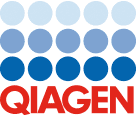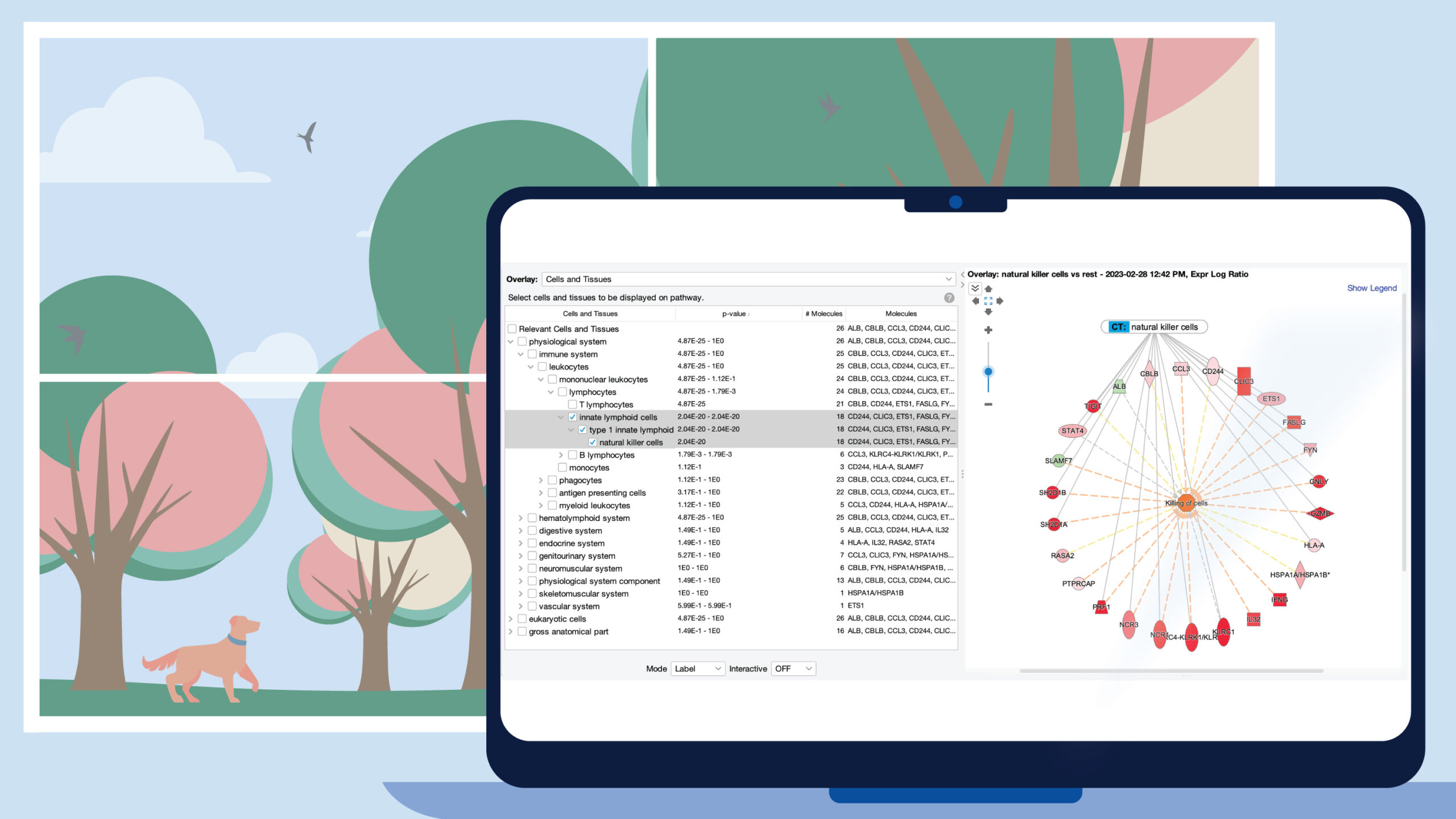This page lists the system requirements for CLC software. Plugin and module sections provide information about requirements that differ to those of the CLC software they are installed upon.
QIAGEN CLC Genomics Workbench*
* Standard requirements without use of functionality in plugins
- Windows: Supported versions of Windows 10, Windows 11, Windows Server 2016, Windows Server 2019 and Windows Server 2022
- Mac: macOS 13, 14 and 15
- Linux: RHEL 8 and later and supported versions of SUSE Linux Enterprise Server 12.5 and later. The software is expected to run without problem on other recent Linux systems, but we do not guarantee this. To use BLAST related functionality, libnsl.so.1 is required.
- 64 bit operating system
- 16 GB RAM recommended (8 GB RAM required)
- 1024 x 768 display required
- 1600 x 1200 display recommended
Memory and CPU settings for mapping reads
For mapping to the human genome ( 3.2 gigabases), or genomes of a similar size, 16 GB RAM is required. Smaller systems can be used when mapping to small genomes.
Larger amounts of memory can help the overall speed of the analysis when working with large datasets, but little gain is expected above about 32 GB of RAM.
Increasing the number of CPUs can decrease the time a read mapping takes, however, performance gain is expected to be limited above approximately 40 threads.
System requirements for 3D viewers
A graphics card that supports OpenGL 2.0.
Note: 3D rendering is only supported when the CLC Genomics Workbench is installed on the same machine the viewer is opened on. Indirect rendering (such as X11 forwarding through ssh), remote desktop connection/VNC, and running in virtual machines is not supported.
System requirements for de novo assembly
De novo assembly may need more memory than stated above – this depends both on the number of reads, error profile and the complexity and size of the genome.
When assembling PacBio HiFi reads with the De Novo Assemble Long Reads tool, at least 32 GB RAM is recommended.
For examples of the memory usage of various data sets when using the De Novo Assembly tool, see https://resources.qiagenbioinformatics.com/white-papers/White_paper_on_de_novo_assembly_4.pdf.
Other requirements for long read analysis
The following tools for working with long reads require an AMD/Intel CPU that supports AVX2 or an Apple M series CPU:
De Novo Assemble Long Reads
Polish Contigs with Reads
Correct Reads (legacy)
Polish Contigs with Reads and Correct Long Reads (legacy) use Racon (Vaser et al., 2017), for which the following is noted: Memory consumption of polishing equals the size of the mandatory input files, while the memory is somewhat larger for error correction. See https://complex.zesoi.fer.hr/en/blog-en/58-racon-1-0-release.
CLC data location requirements
Requirements for CLC data locations are provided in Adding locations.
Working on large systems
When using large systems (>64 cores), a CLC Genomics Server with job nodes running on virtual machines provides potential to use more of the compute capacity in a controlled manner than a CLC Genomics Workbench. Jobs submitted to a CLC Genomics Server job node setup can be run in parallel, with appropriate CPU limits configurable for each node.
If you choose to run the CLC Genomics Workbench on a system with more than 64 cores, you will need a network license.
Plugins and Modules
Biomedical Genomics Analysis plugin
In addition to meeting the system requirements of the CLC Genomics Workbench or the CLC Genomics Server, the following requirements must be met:
- 32 GB RAM recommended (16 GB RAM required).
- At least 100 GB free disk space in the temporary directory of the CLC Genomics Workbench or the CLC Genomics Server.
We recommend analyzing data generated with the following QIAseq kits and panels on a CLC Genomics Server:
- QIAseq Human Exome Kits
- QIAseq Multimodal Pan-Cancer Panel
- QAIseq Multimodal DNA/RNA Library Kit
- QIAseq Tumor Mutational Burden Panels
- QIAseq Targeted DNA Human TMB and MSI Panel
The system requirements of the CLC LightSpeed Module are the same as those for the CLC Genomics Workbench, apart from the following:
- All LightSpeed analyses require 32 GB RAM.
- A CPU that supports AVX2 or NEON instruction sets is required.
CLC Single Cell Analysis Module
In addition to meeting the system requirements of the CLC Genomics Workbench or the CLC Genomics Server, the following requirements must be met:
- 64 GB RAM recommended (32 GB RAM required).
We recommend running the following on a CLC Genomics Server:
- Single Cell RNA-Seq Analysis.
- Analysis of datasets exceeding 50000 cells.
The system requirements of CLC Microbial Genomics Module are the same as those for CLC Genomics Workbench, apart from the following:
- Some tools require an AMD/Intel CPU that supports AVX2 or an Apple M series CPU.
Special requirements for the MLST Scheme tools
The system requirements for the MLST Scheme tools depend on the size of the MLST schemes (both the number of alleles and the number of sequence types). A laptop with 16GB of memory is normally sufficient for 7-gene schemes or cgMLST schemes based on a moderate number of isolates. Typing or constructing larger schemes may require more memory, and in general, we recommend at least 64GB of memory when working with cg/wgMLST schemes based on more than 100 isolates.
Special requirements for the Taxonomic Profiler
The quality performance of the Taxonomic Profiler depends on the reference database used – the more complete a database, the better the quality. However, running the Taxonomic Profiler with a given database size will require at least the same amount of memory. For example, running with a 14 GB database requires at least 16 GB of RAM, and running with a 56 GB database requires a minimum of 64 GB RAM. When creating your reference database with the Download Microbial Reference Database tool, you will get a warning about the memory requirements needed for running the Taxonomic Profiler with this database.
Special requirements for De Novo Assemble Small Genome
On Linux, this tool is supported on Linux RHEL 8 and later, or supported versions of SUSE Linux Enterprise Server 15.3 and later. The tool is expected to run without problem on other recent Linux systems, but we do not guarantee this.
At least 16 GB RAM is recommended for running De Novo Assemble Small Genome.
Special requirements for De Novo Assemble Metagenome
At least 16 GB RAM is recommended for running De Novo Assemble Metagenome.
Special requirements for Create Whole Metagenome Index
The amount of free disk space needed in the temporary files directory depends on the size of the database. Approximately 5 bytes are required for every third base in the database. For example, to create an index from an 90 Gb database, you need 90/3 x5 = 150 GB of free temporary disk space.
Special requirements for OTU Clustering
The memory requirement of Reference based OTU clustering depends on the size of the reference database used; more and longer sequences require more run time and memory. Newer version of common choices (e.g. the full SILVA SSU database) are likely to be too large for a 16 GB machine. Instead we recommend using clustered databases (e.g. the SILVA SSU 99% database) and/or otherwise filtering and subsetting the database, to minimize its size.
Special requirements for Classify Long Read Amplicons
The memory requirement for Classify Long Read Amplicons depends on both sample size and the size of reference database. See the manual for details.
QIAGEN CLC Main Workbench
- Windows: Supported versions of Windows 10, Windows 11, Windows Server 2016, Windows Server 2019 and Windows Server 2022
- Mac: macOS 13, 14 and 15
- Linux: RHEL 8 and later and supported versions of SUSE Linux Enterprise Server 12.5 and later. The software is expected to run without problem on other recent Linux systems, but we do not guarantee this. To use BLAST related functionality, libnsl.so.1 is required.
- 64 bit operating system
- 1 GB RAM required
- 2 GB RAM recommended
- 1024 x 768 display required
- 1600 x 1200 display recommended
System requirements for 3D viewers
A graphics card that supports OpenGL 2.0.
Note: 3D rendering is only supported when the CLC Main Workbench is installed on the same machine the viewer is opened on. Indirect rendering (such as X11 forwarding through ssh), remote desktop connection/VNC, and running in virtual machines is not supported.
QIAGEN CLC Genomics Server*
* Standard requirements without the use of functionality in plugins. For compute-intensive operations used by several plugins and modules, the recommended number of cores is 32.
Server system
- Windows: Supported versions of Windows 10, Windows 11, Windows Server 2016, Windows Server 2019 and Windows Server 2022
- Mac: macOS 13, 14 and 15
- Linux: RHEL 8 and later and supported versions of SUSE Linux Enterprise Server 12.5 and later. The software is expected to run without problem on other recent Linux systems, but we do not guarantee this. To use BLAST related functionality, libnsl.so.1 is required.
- 64 bit operating system
- For CLC Server setups that include job nodes and grid nodes, those nodes must run the same type of operating system as the master CLC Server.
- File system that supports file locking
Hardware requirements
- 16 GB RAM recommended (8 GB RAM required)
- Disk space: 500 GB required. More needed if large amounts of data are analyzed.
Working on large systems
When using large systems (>64 cores), a CLC Genomics Server with job nodes running on virtual machines provides potential to use more of the compute capacity than a single CLC Genomics Server. Jobs submitted to a CLC Genomics Server job node setup can be run in parallel, with appropriate CPU limits configurable for each node.
CLC Network License Manager
The CLC Network License Manager does not require much processing power and only consumes a few megabytes of memory. This means that if you are putting together a dedicated server specifically for running the license manager, a modestly powered system equipped with a high number of redundant components will probably be a better investment than a system which is faster, has more memory, etc.
The system requirements for the CLC Network License Manager are:
- Windows 10 and Windows 11
- Mac: macOS 12, 13 and 14. The software is expected to run without problems on more recent macOS releases than those listed, but we do not guarantee this.
- Linux: The software is expected to run without problem on recent Linux x86-64 systems. Further details are below.
The list above has been derived from the LM-X supported system list: https://docs.x-formation.com/display/LMX/Supported+platforms and systems we have tested on. The CLC Network License Manager is expected to work on 64 bit Windows, macOS and Linux systems not explicitly listed that meet requirements on the LM-X site, but we cannot guarantee this.
Java
The QIAGEN CLC Workbenches, CLC Command Line Tools, CLC Genomics Server and the CLC Network License Manager are built using Java technology. The QIAGEN CLC software includes a JRE (Java Runtime Environment) necessary to execute the software, independent of the operating system (Windows, Mac OS X or Linux). This JRE will not interfere with existing JRE’s on your computer and will only be used to run the QIAGEN CLC software.
Mac and the Mac logo are trademarks of Apple Computer, Inc., registered in the U.S. and other countries. Microsoft, Windows and the Windows logo are either registered trademarks or trademarks of Microsoft Corporation in the United States and other countries.
Scope of requirements
All the system requirements on this page are requirements for the most recent versions of the products. For requirements for older versions, please refer to the user manual for that specific version.






























